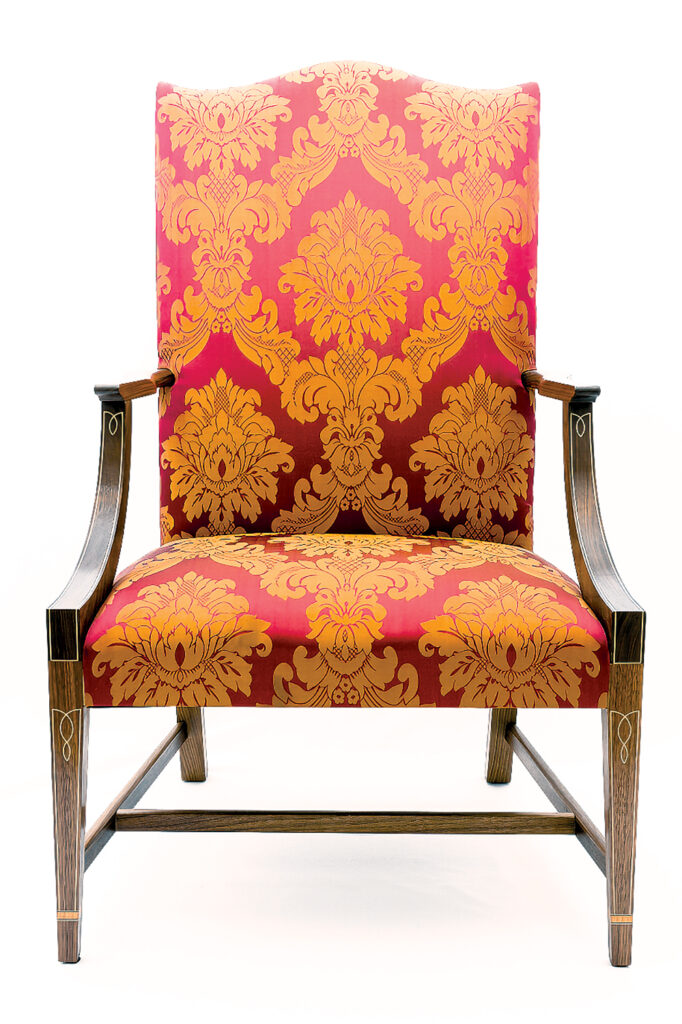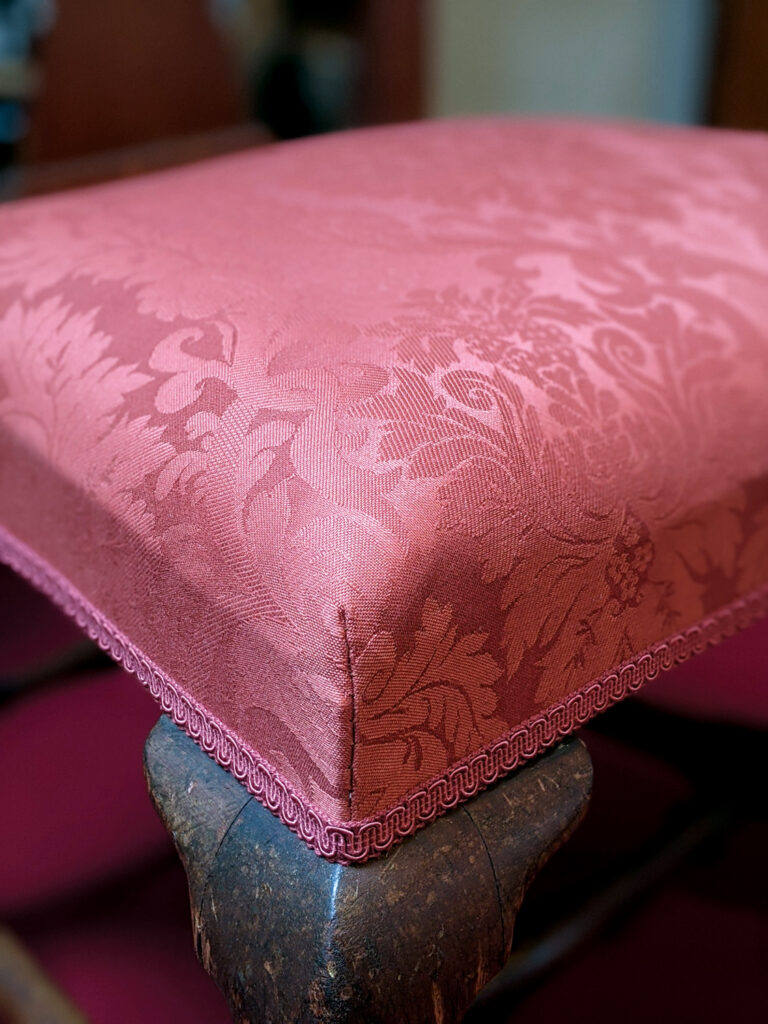
Growing demand, using environmentally friendly materials and finding ways to address the labor shortage are some of the market trends and challenges upholsterers are seeing in their industry.
Upholsterers are continuing to feel the impacts of the COVID-19 pandemic—in a good way.
“We were busy during the pandemic,” says Richard Montalbano, president of Montalbano Furniture in Broadview, Ill. “During the pandemic people were staying home, looking around at their chairs and saying, ‘We need to replace that fabric.’”
Founded in 1923, Montalbano Furniture started as a manufacturer of furniture but shifted its focus in the 1990s to refinishing, restoring and reupholstering furniture.
Harmony Maraldo, owner of Tack & Tuft, which is based in New Hampshire, agrees that the pandemic fueled interest in restoring and reupholstering quality furniture.
“There was an uptick because people were looking at their furniture every day and they wanted something beautiful,” she says.
Revenue for the reupholstery market edges up
The numbers bear out the growing interest in reupholstery. Industry research consultant IBISWorld reports that revenue for the furniture repair and reupholstery market is expected to grow 1% in 2023 to $2.1 billion. The market size grew 0.5% between 2018 and 2023.
Maraldo, who started her business in 2020, also is president of the 200-member National Upholstery Association (NUA), which is dedicated to supporting and growing the upholstery trade.
Maraldo got interested in upholstery because she wanted to upholster furniture created by her husband, who is a craft furniture maker. She took several workshops taught by a master upholsterer at The Furniture Institute of Massachusetts, which has since closed. She also took classes online.
Today, her business is focused mostly on restoring antiques. She is not unlike many people who are now entering the business.
“People are choosing upholstery as a second career,” she says. “It starts as a hobby and then it turns into a business.”
Younger generation spurs interest
The upholstery business overall is being fueled by younger consumers who are interested in using environmentally friendly materials such as horsehair, cotton, burlap and chemical-free woods.
“They are demanding sustainable materials and are interested in restoring used furniture,” Maraldo says.
They are also interested in quality of execution, according to Montalbano, who says his shop uses eight-way, hand-tied coiled springs in the platforms and springs in cushions for chairs and sofas.
“Current furniture lasts three to five years; this [reupholstered and restored furniture] will last 50 to 100 years,” he says.

Hurdles ahead
Upholsterers are facing many challenges, including rising costs for materials.
“The springs, and everything, the finishings, have doubled in price,” Montalbano says. “Everybody’s jumped on the bandwagon and raised their prices for everything.”
Dealing with such issues as supply chain delays means managing customers’ expectations.
“We’re promising later and we’re not starting working until we have the materials in hand,” Maraldo says.
Fees rise
Upholsterers have increased their prices to cope with inflation, according to Maraldo, who says one resource the NUA offers its members is a survey of what upholsterers across the country charge.
“We issue an annual pricing survey that can be filtered by geographic location,” she says. “You can see what your peers are charging. A lot of upholsterers have increased their prices to stay competitive.”
Another area where NUA has gotten involved is in explaining the standard for the flammability of upholstered furniture, which is issued by the Consumer Product Safety Commission (CPSC) and provides flammability testing and labeling requirements for upholstered furniture.
“Our members were very confused about the rules when they came out, but they want to be compliant,” Maraldo says.
The NUA coordinated a call with the CPSC to better understand new rules that apply only to furniture if it changes ownership after reupholstery is complete. It published a fact sheet about the standards on its website, NationalUpholsteryAssociation.org.
The NUA notes that an upholstery supplier should be able to tell upholsterers which products it sells are compliant with the flammability standard.
“It’s in your supplier’s best interest to ensure that they sell products that comply with new regulations. Many suppliers will note compliance on their websites, catalogs or product pages. Others may require a phone call or email to confirm,” the NUA states on its website.

Labor shortage continues
Another difficult issue upholsterers are facing is an ongoing labor shortage.
“A lot of older upholsterers are aging out and there is no one to replace them,” Maraldo notes.
She attributes some of the labor loss to an overall focus that emphasized young people going to college rather than learning a trade.
The NUA is working on several initiatives to attract workers to the industry. It has launched a job board and encourages employers to hire and then train employees.
“I don’t think the [upholstery] schools are ever going to come back, at least in the short term,” Maraldo says. “Today’s learning is going to happen on the job and online.”
Despite the challenges, both Maraldo and Montalbano enjoy seeing the delight customers find in their refurbished items.
“I like making people happy,” Montalbano says.
Annemarie Mannion is a freelance writer based in Willowbrook, Ill.
 TEXTILES.ORG
TEXTILES.ORG


